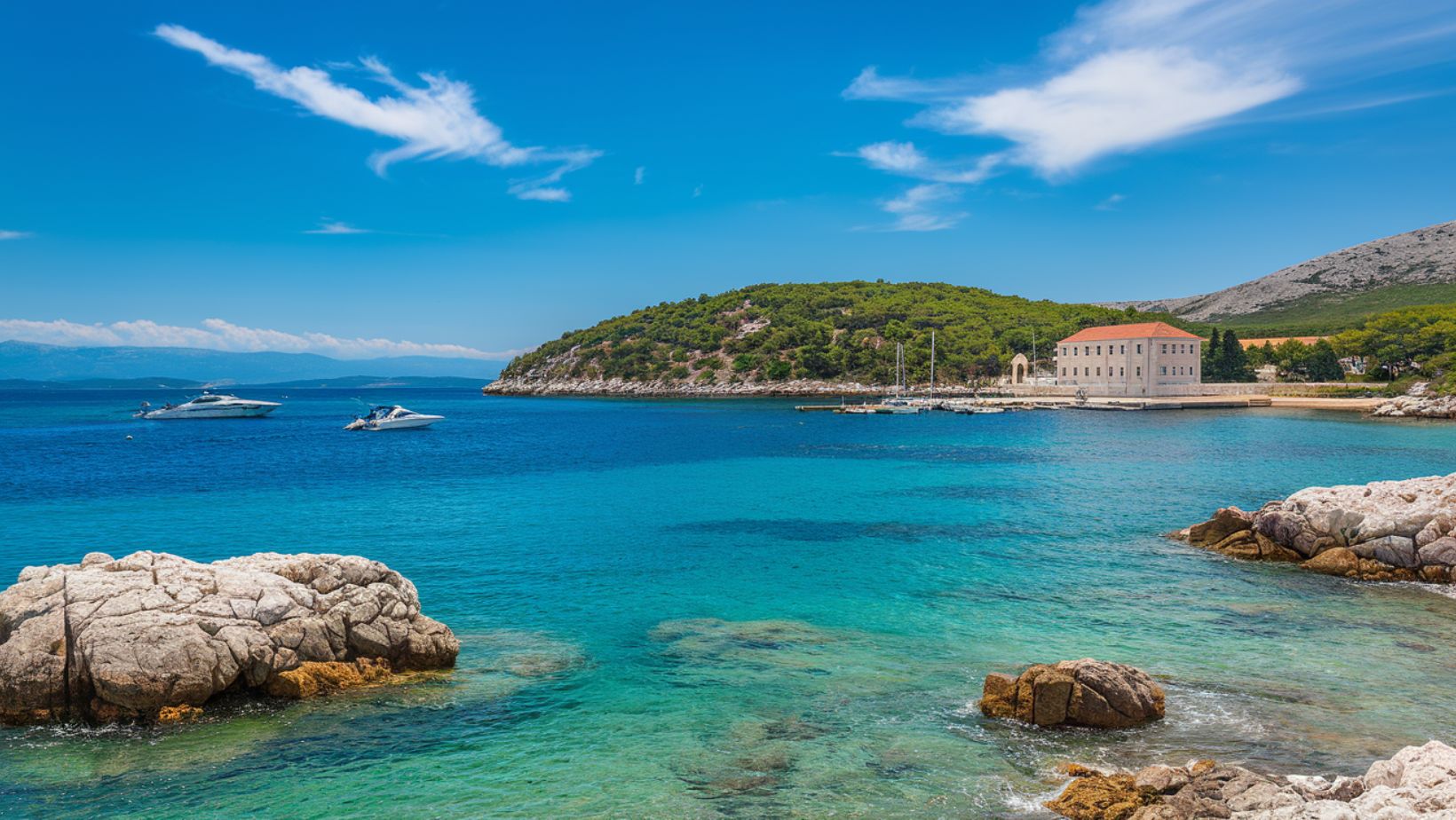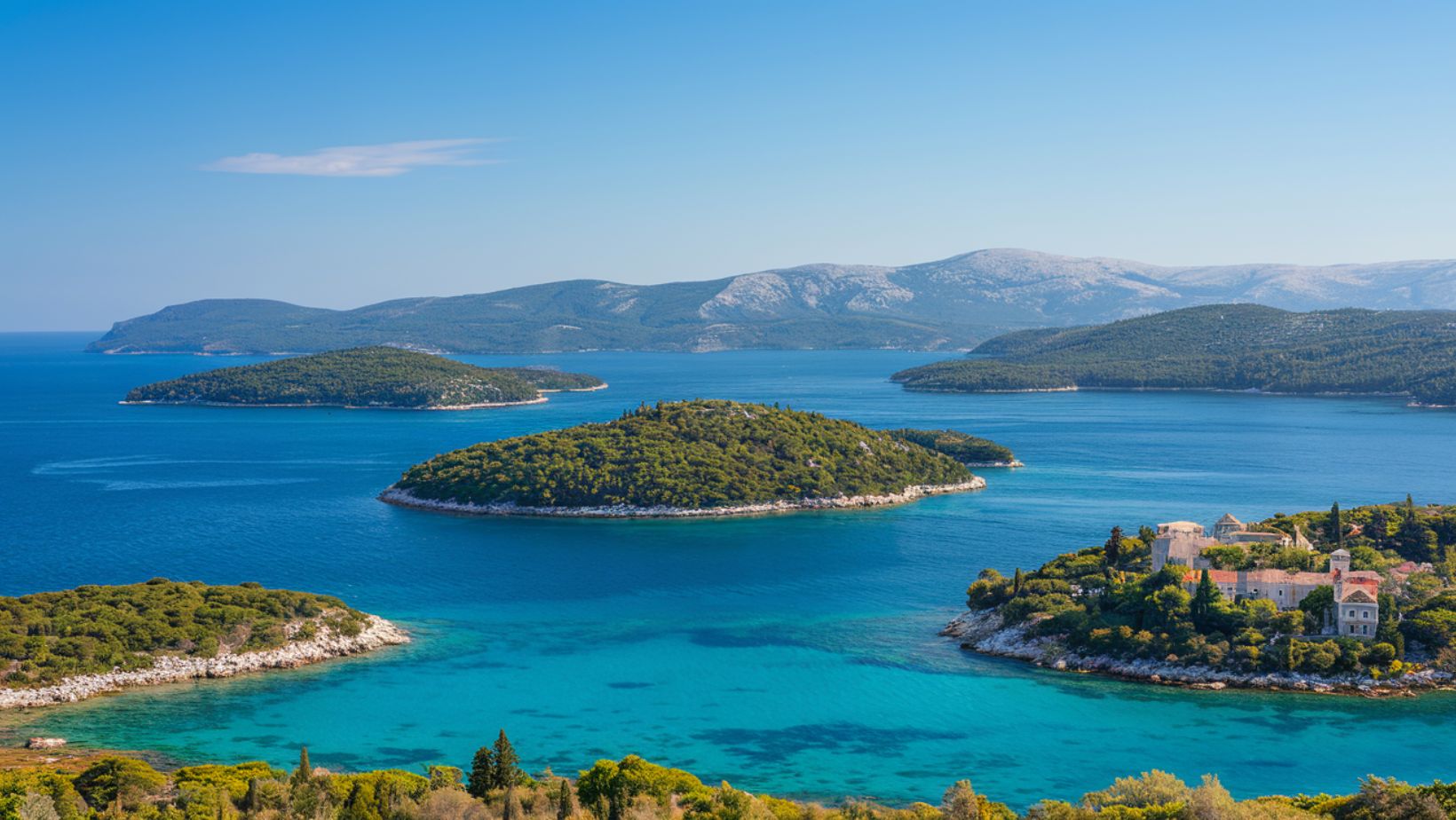p>Along a stretch of crystal-clear waters lies one of Europe’s most underrated coastal treasures. Where ancient Roman emperors once built their summer palaces, and where more than 1,000 islands dot the azure sea like scattered pearls.
This stunning coastline has managed to remain relatively unknown to mass tourism, despite hosting multiple Game of Thrones filming locations and boasting more sunshine hours than Sydney, Australia.
1. You Can Live Like a Roman Emperor for Less Than $100 a Day
Diocletian’s Palace in Split isn’t just another archaeological site – it’s a living, breathing city where locals still inhabit the same walls that housed a Roman emperor 1,700 years ago.
Unlike other ancient ruins, these streets bustle with cafes, shops, and apartments seamlessly integrated into the original Roman architecture. What’s even more fascinating is that some residents still use the original Roman water supply system for their daily needs.
The palace’s basement halls, perfectly preserved due to the accumulation of medieval waste that protected them for centuries, now offer an exact blueprint of how the emperor’s residential quarters above once looked.
These halls gained worldwide fame after serving as the location where Daenerys kept her dragons in Game of Thrones.
2. The Sun Shines 300 Days Per Year
The region enjoys more annual sunshine hours than Sydney, Australia, making it a perfect year-round destination. Even in winter months, you can expect 6-7 hours of sunshine daily. This exceptional climate has created perfect conditions for the island of Lastovo, where time seems to have stood still since the 14th century.
The island is also home to one of Europe’s best-preserved dark sky reserves, where light pollution is strictly regulated. This makes it possible to see the Milky Way with naked eyes on most clear nights, a sight that has become increasingly rare in modern Europe.
3. You’ll Never Swim at the Same Beach Twice
Zlatni Rat beach, often called the Golden Horn, is a natural phenomenon that defies expectation. This V-shaped pebble beach changes its tip’s direction depending on the winds and currents, making it look different almost every day. Underwater currents have been creating this unique formation for thousands of years, bringing new pebbles from the seabed.
What many visitors don’t know is that beneath the beach lies a dense pine forest that’s actually older than the beach itself. The trees’ complex root system helps anchor the beach in place, preventing it from completely washing away.
4. You Can Drink Wine from the World’s Most Ancient Vineyards
The Stari Grad Plain on Hvar Island represents the best-preserved ancient Greek agricultural system in the Mediterranean. The fields are divided into perfectly geometrical parcels of 1 x 5 stadia – the exact measurements used by ancient Greek surveyors. Even more remarkably, these same plots have been continuously cultivated with grapes and olives for 2,400 years.
The stone walls separating these fields contain no mortar and have been maintained using the same dry-stone technique since Greek times. Recent studies have shown that these walls harbor unique ecosystems, including several species of lizards found nowhere else in the world.
5. The Local Cats Will Treat You Like Royalty
In Dubrovnik, cats aren’t just pets – they’re living monuments protected by municipal law. These felines are descendants of ships’ cats from the city’s maritime golden age, when Dubrovnik’s republic rivaled Venice in naval power. The cats played a crucial role in protecting valuable cargo from rats and preventing the spread of plague.
Today, there’s approximately one cat for every seven human residents, and harming them can result in substantial fines. Local restaurants are even required by tradition to leave out water and food scraps for their feline neighbors.
6. You Can Walk in Marco Polo’s First Footsteps
Korčula island doesn’t just claim to be Marco Polo’s birthplace – it has compelling historical evidence to support this assertion. The island’s maritime records from the 13th century show extensive trade connections with Venice, and several documents mention the Polo family name. The house believed to be his birthplace still stands in Korčula Town.
What’s less known is that the island’s unique architectural layout was designed to create natural air conditioning. The western streets are straight to catch the refreshing maestral wind, while the eastern streets curve to minimize the effects of the cold bura wind.
7. You Can Sleep in a 14th Century Quarantine Station
The Lazarets of Dubrovnik, built in 1377, established the modern concept of quarantine. Today, these historic buildings have been transformed into exclusive hotels and museums, but their original purpose was revolutionary: they were the first facilities in Europe to systematically isolate travelers to prevent the spread of disease.
The facilities were so well-designed that they became the model for similar institutions throughout the Mediterranean. The original quarantine protocols developed here were so effective that they remained virtually unchanged until the early 20th century.
8. The Sea Will Play Music Just for You
In Zadar, architects have created a unique maritime instrument – a 230-foot organ played by the sea itself. Waves push air through 35 pipes installed under marble steps, creating an ever-changing melody. What many don’t know is that the tubes are mathematically arranged to play notes from the traditional Dalmatian klapa singing, creating a harmony that changes with the moon phases due to varying tidal forces.
Next to it, the Sun Salutation installation contains 300 glass plates that collect solar energy during the day and create a spectacular light show at night, synchronized with the sea organ’s sounds.
9. You Can Harvest Your Own Ancient Sea Salt
Ston’s walls, the longest complete fortress system in Europe after the Great Wall of China, weren’t built just for defense – they were built to protect the town’s valuable salt pans. These salt works, still in operation today, produced what was called “white gold” during the Middle Ages, and the salt harvesting process remains unchanged for over 700 years.
The walls themselves contain a hidden architectural feature: they’re built in an irregular pattern that makes them earthquake-resistant, a design that has helped them survive numerous seismic events over the centuries.
10. You Can Taste Wine Aged Under the Sea
Off the coast of Pelješac peninsula, an innovative winery has taken wine aging to new depths – literally. Bottles of wine are aged in amphoras 20 meters underwater, where constant temperature and pressure create unique aging conditions impossible to replicate on land.
Marine scientists have discovered that the wine develops distinct characteristics due to the gentle swaying of the sea currents.
The containers are specially designed to allow seawater to interact with the wine through a semi-permeable membrane, adding subtle mineral notes to the final product. Divers must tend to these underwater vineyards, making this perhaps the world’s most unique wine-growing operation.

